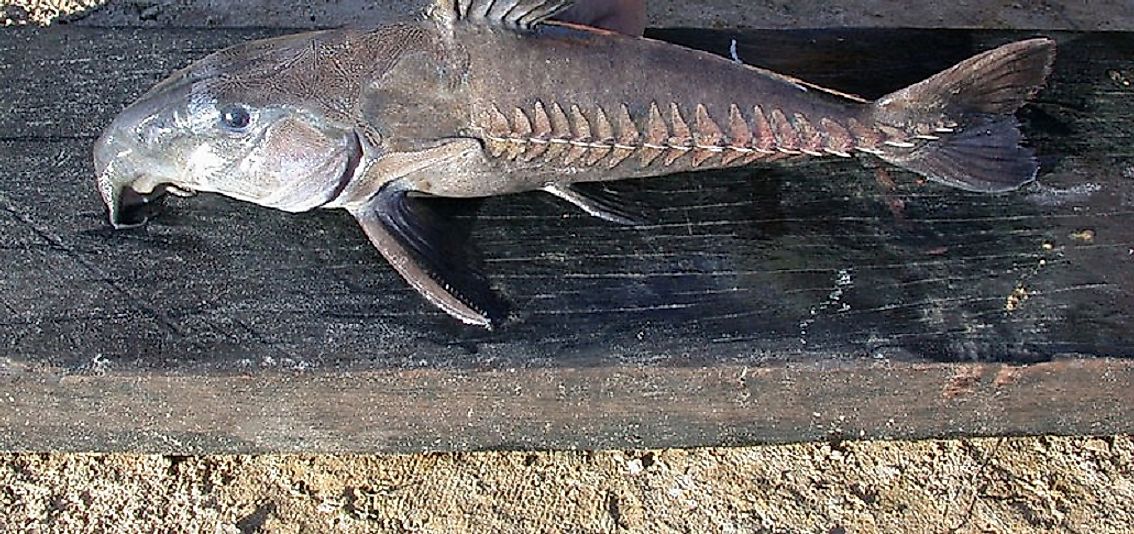Native Fish Of Ecuador

Ecuador is Spanish speaking nation located in the northwestern regions of South America. It has its capital in Quito while Guayaquil is the largest city in the country. The Mestizo is the predominant ethnic group making up 78% of the entire population. The country is a unitary presidential system nation and has a total population of 16,144,000 people. According to the Conservation International, Ecuador is one of the 17 mega diverse countries with over 16,000 plant species, over 1,600 animal species, and over 6,000 butterfly species. It also has a high level of endemism. In this article, we discuss some of the native fish species in Ecuador
Banded Toadfish
The Banded Toadfish is a relatively small fish which is white on the underside and gray on the upper sides, and has numerous small white spots. It is a fish which lacks scales but has embedded spines in some instances. The skin and some internal organs of the fish are toxic, and the members of the species can fill their abdomens with air and water to appear huge in case a predator poses a danger. On average, they grow to a maximum length of eight inches and have a life expectancy of six years reaching sexual maturity after two years. Spawning takes place during the months of October to January and takes place in the shallow coastal waters. The males and females release their sperms and eggs into the water where fertilization takes place. They feed on crustaceans, and marine worms at a tender age, and mature ones feed on mussels. The banded toadfish are preyed on by tuna, tailor and mulloway species which are resistant their toxin.
Redtail Catfish
The Redtail Catfish is a huge fish, weighing around 180 pounds and measuring up to six feet in length. It is colorful with a brown back, yellow sides, and either orange or red dorsal, and caudal fins. Due to the color of the fish, the natives do not consume it, but the authorities have crossbred it with other fish such as the Tiger Shovelnose to create a more viable fish food. The juvenile catfishes are kept in aquariums despite their eventual large size. The friendly and good nutrition in aquariums enables the fish to grow extremely fast. However, the death of most catfishes in aquariums has been linked to overfeeding. They are omnivorous and highly predatory. They are known to be territorial with their kind and will consume anything that fits In their mouth. Red tail catfish are aggressive and must be handled with great caution.
Emerald Catfish
The colors of this fish will often depend on the kind of light it is viewed in. The body might appear either metallic green, blue-green, or mostly bluish. The pectoral, ventral, and anal fins are yellowish as well as the whole of the ventral area. The females are larger and appear to be pink while the males are mostly yellowish. It habits waters with dense vegetation, especially along the banks. It is a relatively small fish measuring three inches in length and feeds on worms, crustaceans, and insect Larvae. The female lays eggs in submerged vegetation and does not guard the eggs. The fish has been described as friendly and less demanding. These attributes have made it a popular fish for domestication in aquariums. They are shy especially when kept alone and are best kept in groups.
Cuiu Cuiu
The Cuiu cuiu is a thorny catfish with lengths of up to 39 inches that attains a weight of up to 29 pounds. It has lateral spikes for self-defense. It inhabits muddy areas in streams and lakes and feeds on detritus, chironomid, crustaceans. It feeds by shifting through the sand and mud and detecting eatable parts using the receptors in the top and bottom of the mouth. Domestication of the cuiu cuiu is on the rise in Ecuador. It is a shy fish and should be provided with hiding places in the aquariums.
Threats to the Fish of Ecuador
Predation, over-fishing, and changes to habitats are the major threats to these species of fish. Over fishing has led to decrease in their number while predation by other fish has led to a small number of fish developing to adulthood. Climate change is also changing the temperature of the water and the fish are migrating toward unfamiliar places that is less conducive for their survival.
Native Fish Of Ecuador
| Native Fish of Ecuador | Scientific Name |
|---|---|
| Banded Toadfish | Aphos porosus |
| Redtail Catfish | Phractocephalus hemioliopterus |
| Emerald Catfish | Corydoras splendens |
| Tail Bar Hoplo | Megalechis picta |
| Cuiu Cuiu | Oxydoras niger |
| Mexican Blenny | Paraclinus mexicanus |
| Redhook Myleus | Myloplus rubripinnis |
| Black Marble Hoplo | Megalechis thoracata |
| Munk's Devil Ray | Mobula munkiana |
| Small Sanddab | Citharichthys platophrys |







